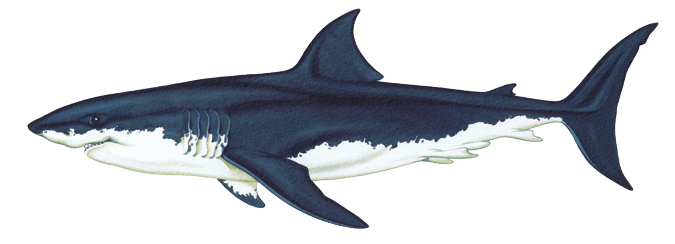Great white shark
The most famous (or infamous) of all shark species, the great white shark (Carcharodon carcharias) inspires awe (and fear) in many people. Following years of heavy recreational and commercial fishing, the species is now vulnerable and in low numbers throughout the world.

Description
Great white sharks grow to at least six metres and 3000 kg. Torpedo shaped, with a distinctive crescent shaped tail and very small second dorsal and anal fins. White sharks have large, serrated triangular teeth and are bronzy to blue on the top, white underneath, providing excellent camouflage in the water.
Distribution
In Australia, white sharks are more commonly found in the south, however sharks have been observed from central Queensland, NSW, Victoria, SA and WA. White sharks are also found near shore along most of the world's temperate coastlines, including South Africa, Guadeloupe and California. The species is relatively scarce compared to other shark species.
Diet
Juvenile great whites (under about 3.5 metres) eat a variety of fish, rays and other sharks. Larger adults eat marine mammals including sea lions and seals, small toothed whales and otters.
Conservation status
Vulnerable. This species is now protected in all Australian states and territorial waters. The White Shark is also protected in many places around the world. South Africa was the first to protect this species in 1992, followed by Namibia, the Maldives, Florida and California and Australia. New Zealand gave the White Shark protected species status in 2007.
Shark smarts
Did you know that great white sharks migrate? This behaviour was first observed in 2003, when scientists in South Africa tagged a female great white (lovingly named Nicole, after our own Nicole Kidman) and were amazed to see that she swam over 11,000 km to Western Australia in 99 days. She was observed in South Africa again, 6 months later, in August of 2004. This behaviour has since been observed in sharks swimming around the coast of Australia and over the ditch to New Zealand.
